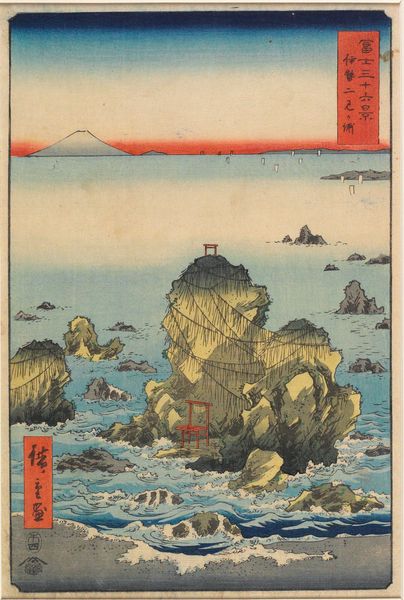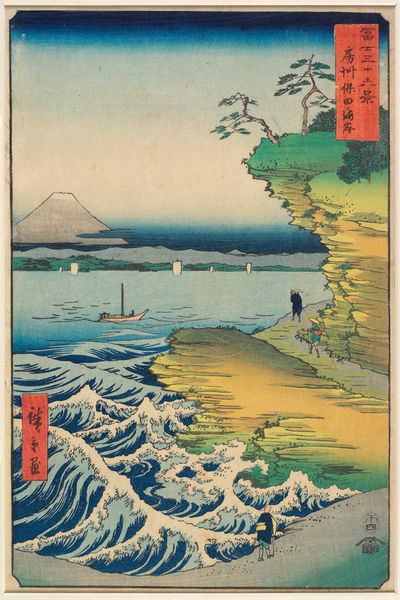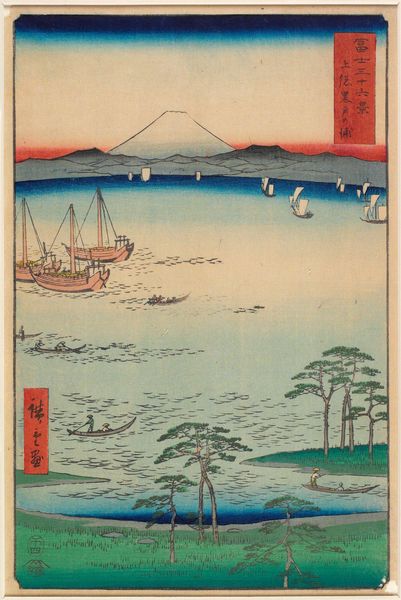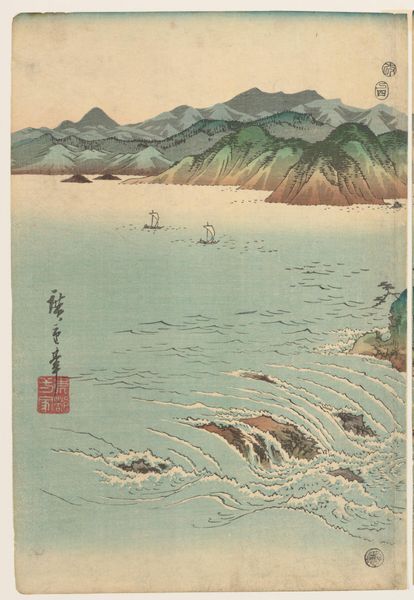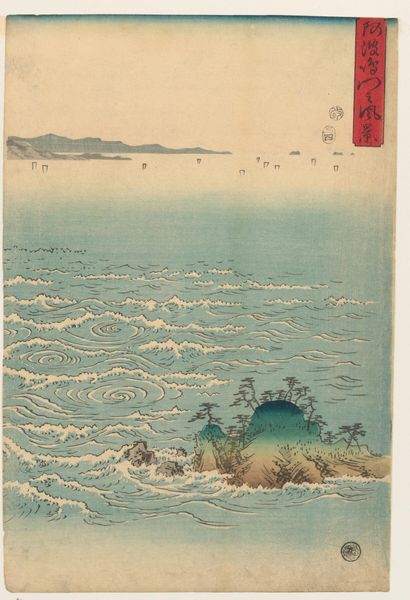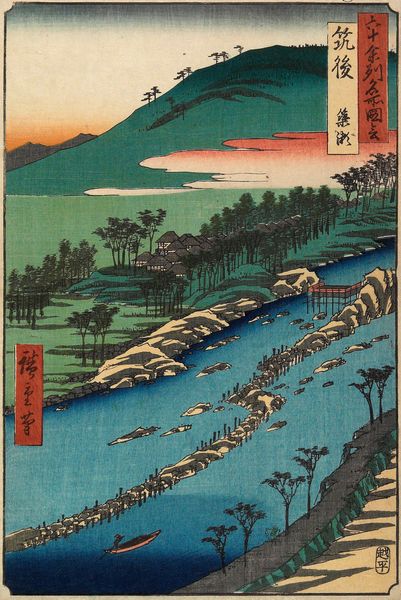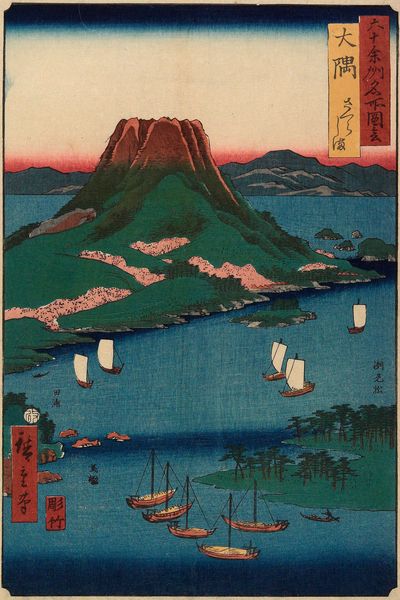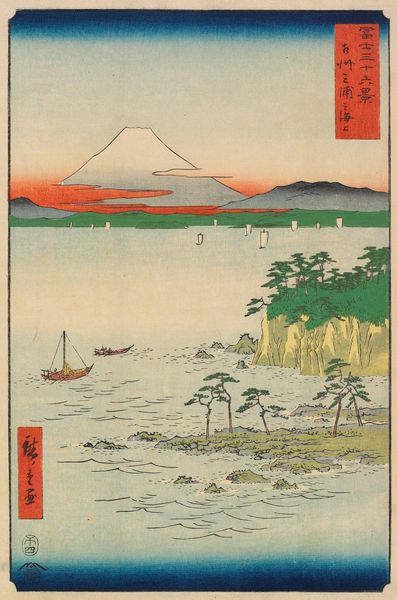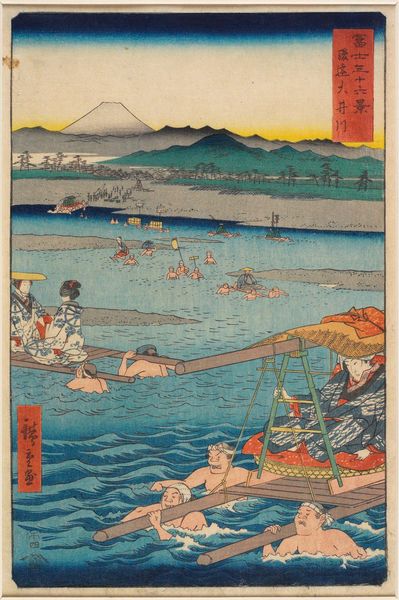
Cho_shi Beach at the Open Sea Possibly 1853 - 1858
0:00
0:00
Dimensions: 13 1/2 × 8 15/16 in. (34.3 × 22.7 cm) (image, vertical ōban)
Copyright: Public Domain
Editor: So, this is Utagawa Hiroshige's "Cho_shi Beach at the Open Sea," likely made between 1853 and 1858. It's a woodblock print, and I'm immediately struck by the almost dreamlike quality of the water. What do you see in this piece from a formal perspective? Curator: I observe a sophisticated interplay of line and color, which contributes significantly to its overall effect. Notice the foreground, how the sharply delineated waves contrast with the broad, flat expanse of the sea itself. It establishes depth, pulling our eye towards the distant, almost ethereal Mount Fuji. Do you see how the artist uses varying densities of line to depict texture? Editor: Yes, I see that now! The texture of the rocks is created with so many intricate lines, compared to the smoother sea and sky. Curator: Precisely. Furthermore, let’s consider the color palette. The gradation from the deep blues of the water to the subtle pinks and oranges of the sky. This carefully orchestrated transition guides the viewer’s gaze upward, creating a sense of harmonious balance. Editor: So, the colors aren't just decorative, they are crucial to how we "read" the image? Curator: Indeed. The spatial organization contributes further. The asymmetrical placement of the large rock formations on the left balances the smaller boats dotted across the water. It’s not merely a depiction of a scene; it's a complex orchestration of visual elements. Do you notice any element that repeats throughout the picture? Editor: The repetition of rectangular shapes -- in the sails of the distant boats, the cliff on the right, and that rectangular lantern. They create a sort of visual echo... Curator: Exactly! A sophisticated structuring principle at work, uniting disparate parts into a cohesive whole. It offers a formal framework for contemplation. Editor: I hadn't thought about it that way, seeing the relationships of color and line as being central to the work’s impact. It makes me appreciate how meticulously Hiroshige structured this image. Curator: Understanding this reveals how artists actively shaped not just what we see, but *how* we see. It reframes art from the recording of a place, or scene, to a deliberate shaping of a particular perspective.
Comments
No comments
Be the first to comment and join the conversation on the ultimate creative platform.
